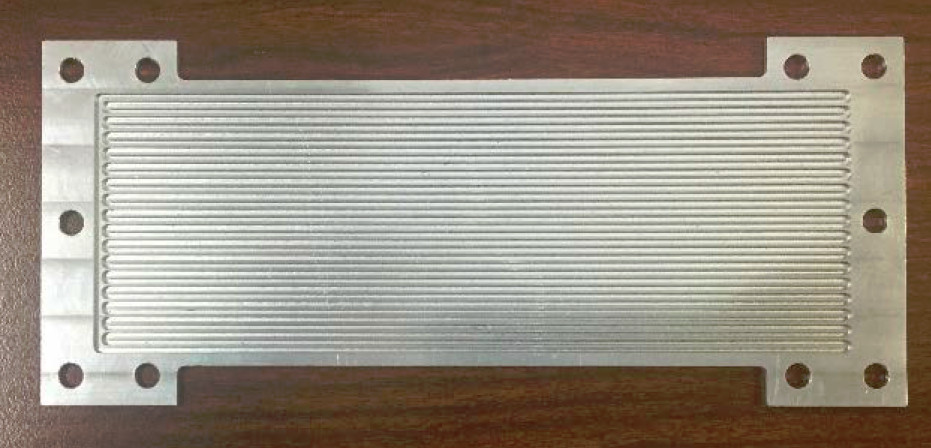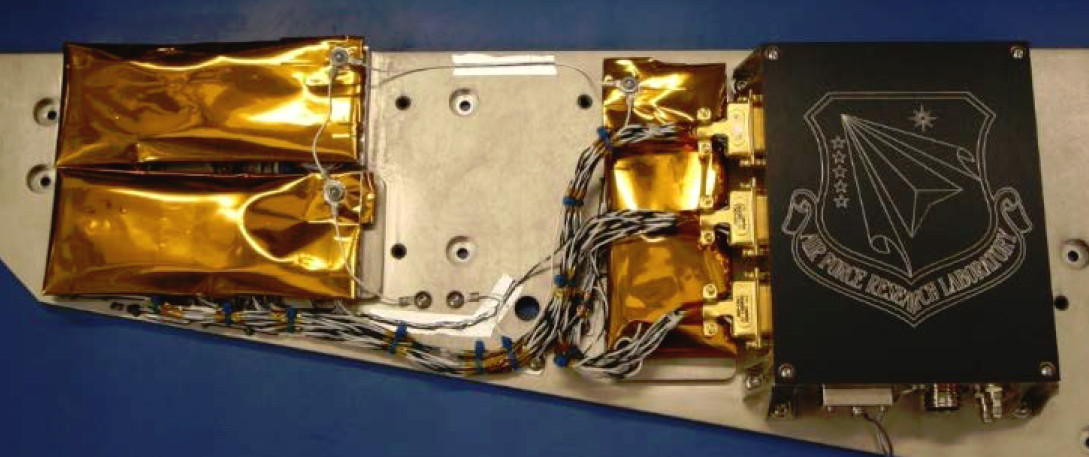Although largely overshadowed by the announcement of a raid in Syria that led to the death of ISIS leader Abu Bakr al-Baghdadi, one of the U.S. Air Force’s two top-secret X-37B unmanned, reusable space planes is back on solid ground after a record-setting 780 days circling the planet. Just what it was doing up there since its launch in 2017 remains largely classified, but the marathon mission comes as the United States, and potential adversaries, is increasingly exploring new options for getting payloads outside of the Earth’s atmosphere, or otherwise accessing space, that are faster, more flexible, and are less predictable.
The X-37B in question landed at NASA’s Kennedy Space Center Shuttle Landing Facility at approximately 3:51 AM on Oct. 27, 2019, after finishing what was formally known as Orbital Test Vehicle Mission 5, or OTV-5. The Air Force had first launched this space plane from the Kennedy Space Center’s Launch Complex 39A on Sept. 7, 2017. A SpaceX Falcon 9 rocket boosted it into the highest inclination orbit of any of the OTV missions to date, an immediate test point that demonstrated an expanded operational envelope for the X-37B. When the development of this space plane first began in 2006, the Air Force said it expected it to be able to stay in orbit for up to 270 days.
“This program continues to push the envelope as the world’s only reusable space vehicle. With a successful landing today, the X-37B completed its longest flight to date and successfully completed all mission objectives,” Randy Walden, the director of the Air Force Rapid Capabilities Office, or RCO, said in a statement. “This mission successfully hosted Air Force Research Laboratory experiments, among others.”

The Air Force has generally declined to offer any significant details about the “experiments” that the X-37B has supported during any of the five OTV missions since 2010. We do know that the space plane carried unspecified “experimental electronics” and an experimental oscillating heat pipe, a type of heat sink, as well as equipment to monitor its function, as part of the Air Force Research Laboratory’s (AFRL) Advanced Structurally Embedded Thermal Spreader II (ASETS-II) effort.
“The OHP is a simple, wickless heat pipe capable of rejecting more than 200 times the maximum heat load of an axially grooved heat pipe, and transporting more than 45 times more heat than copper,” according to an AFRL fact sheet on the project. “In addition to outperforming traditional thermal management technologies, OHPs enable low-cost manufacturing techniques due to the lack of an internal wick structure. OHPs provide a low-cost method to alleviate electronics thermal constraints and allow for increased processing power, or bandwidth, for commercial and military users.”


RCO director Walden’s statement also said that OTV-5 provided “a ride for small satellites,” which some took to mean that the X-37B launched small satellites during the mission. If true, this could be problematic as the U.S. government never registered any additional objects entering space, as is required by international conventions. However, this is more likely a reference to the fact that a number of small satellites shared space on the Falcon 9 rocket during the launch in 2017, something the Air Force announced at the time, not that the space plane itself launched them after arriving orbit.
At the same time, it is important to remember that the X-37B is clearly intended to be able to launch and recover objects in space.
We also know that the previous OTV-4 mission involved the test of Aerojet Rocketdyne’s XR-5A Hall-effect thruster, a type of electric propulsion system that offers greater efficiency for satellites and spacecraft maneuvering in orbit. This was officially in support of the Advanced Extremely High Frequency (AEHF) satellite program, but the technology could be valuable for other space-based systems, as you can read about more here. In August 2018, during OTV-5, the X-37B modified its orbit using an unspecified onboard propulsion system.
During OTV-4, which lasted 718 days, the X-37B had also carried approximately 100 samples of materials from for use in building spacecraft from NASA in order to test how they stood up to the rigors of extended time in space. This included items that NASA had previously experimented with on the International Space Station.
“We’re doing experimentation. You know that, publicly we’ve said that,” said at an Air Force Association event just last week. “We’re doing experimentation predominantly to get after what I’ll say is buying down risks for things that can be very expensive in space, and get a good solid understanding of how one would prepare ourselves for either a large buy, an expensive buy if you will, or in this case, get on with how one wants to operate in the future.”
There has also been widespread speculation over the years about what else the X-37Bs might be doing, including whether they might be gathering intelligence or conducting other operational military missions of some kind. In July 2019, former Secretary of the Air Force Heather Wilson, who had already left her post as the service’s top civilian by that time, had reignited those discussions by making curious claims about the space plane’s capabilities.

It “can do an orbit that looks like an egg and, when it’s close to the Earth, it’s close enough to the atmosphere to turn where it is,” she said at the annual Aspen Security Forum. “Which means our adversaries don’t know – and that happens on the far side of the Earth from our adversaries – where it’s going to come up next. And we know that that drives them nuts. And I’m really glad about that.”
It remains unclear exactly what type of operational envelope she might have been referring to, but this could reflect the X-37B’s ability to dip a wing into the atmosphere as it passes by, using that force to rapidly redirect its orbit. However, experts and amateur observers, who had been actively tracking the X-37B’s movements during OTV-5, almost immediately questioned whether the space plane had actually been performing such maneuvers or even had this capability. It’s also not clear why, if these orbital characteristics offered such a benefit for keeping potential opponents befuddled about the X-37B’s activities, she would publicly disclose them.
What is clear is that the Air Force sees the X-37Bs, which RCO chief Walden had described as “workhorses,” as important stepping stones to future space launch and space-based concepts and capabilities. The space plane is also a clear demonstration of the value of using unmanned platforms, which can conduct operations beyond the limits of human endurance and without the need for life support systems. The record for the longest stay by any individual in space, which Russian cosmonaut Valeri Polyakov set between 1994 and 1995 aboard the space station Mir, sits at 678.7 days and required regular supply shipments, as does any crewed space station.
At the Air Force Association gathering, he suggested the service was using them to test various concepts of operation for reusable spacecraft, which could be applicable to future systems, according to Air Force Magazine. He also said that “the data are still out” on whether the Air Force might want further improved X-37s, and more of them, or an all-new follow-on spaceplane.
Boeing, which built the X-37Bs for the Air Force, as well as the smaller X-37A for NASA, is now under contract to design and build a new reusable space plane, the XS-1, for the Defense Advanced Research Projects Agency (DARPA). The central focus of the XS-1 effort is all about being able to rapidly get payloads into orbit to replace other assets that may have been damaged or destroyed for any reason, including through hostile action. You can read more about that program in this past War Zone piece.

Increasing and very real concerns about a potential adversary employing anti-satellite capabilities during a crisis to degrade U.S. military access to space-based early warning, intelligence gathering, communications and data sharing, navigation, and more, have been driving these types of developments. Russia and China both, among others, have been actively working to develop terrestrial and space-based methods of disabling or destroying targets in orbit. This growing military space race, which includes plans in multiple countries for placing ostensibly defensive weapons in orbit, is also what has prompted the Pentagon to re-establish U.S. Space Command and led advocates in Congress to push for an all-new Space Force service branch.
There have also been signs of growing interest in reusable space planes, as well as aerial two-stage-to-orbit space launch systems, in other countries, such as Russia, India, and China. Whereas the X-37B uses a traditional rocket concept, these concepts use two-stage-to-orbit systems that leverage a mothership aircraft flying in the atmosphere to air-launch a payload into space. You can read much more in detail about U.S. efforts in this realm in this past War Zone feature.
“The safe return of this spacecraft [the X-37B], after breaking its own endurance record, is the result of the innovative partnership between government and industry,” U.S. Air Force Chief of Staff General David Goldfein said in his own statement after the completion of OTV-5. “The sky is no longer the limit for the Air Force and, if Congress approves, the U.S. Space Force.”
The X-37B program is already looking toward its next mission, scheduled to start in 2020, during which it will continue to help the Air Force – and maybe the Space Force – develop new and advanced space-related capabilities as that domain becomes ever-more important to U.S. military operations, as a whole.
Contact the author: joe@thedrive.com
